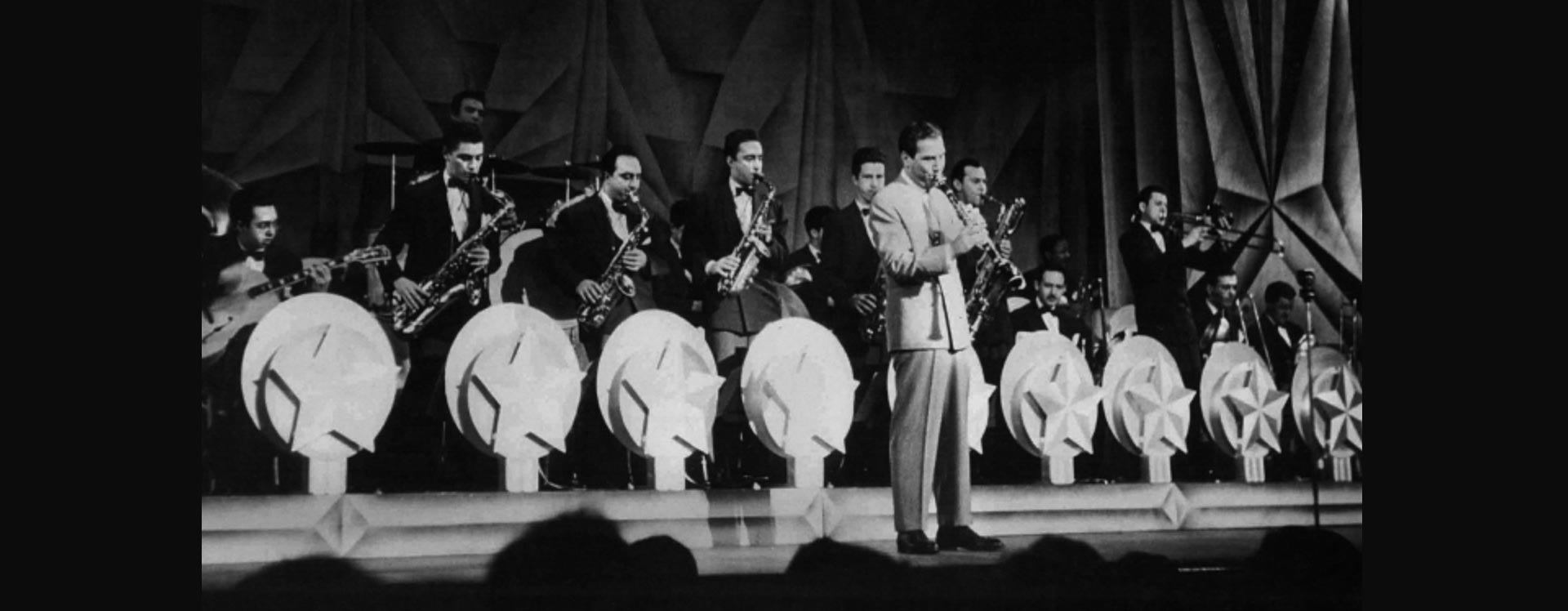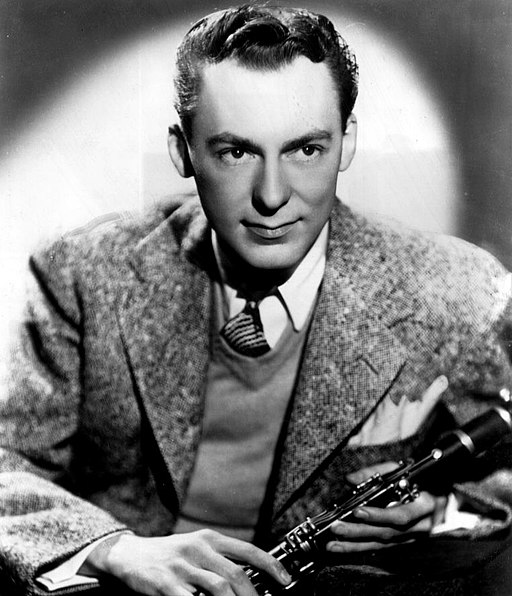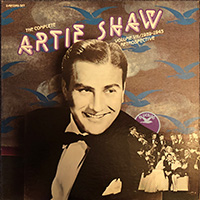

Photo: Artie Shaw and the band onstage at the Strand Theater, NYC, 1945 Below: Publicity shot of Woody Herman, 1943; Bluebird record cover for The Complete Artie Shaw Retrospective 1939-1945.
Sauter worked briefly for three more band leaders before he was given carte blanche to write originals as he saw fit for drummer and Glenn Miller alum Ray McKinley.
Since he had had already arranged for Goodman, Sauter decided to work for another giant of the swing era, Tommy Dorsey. It so happened that an arranger from the Jersey Shore area by the name of Bill Finegan had just been drafted for the WWII effort. As a result, a vacancy arose in the ranks of the Dorsey band.
Sauter would later come to know Bill Finegan as a collaborator in the Sauter-Finegan Orchestra.
However, the musical and personal relationship between Sauter and trombonist Dorsey did not work out. Sauter's time with Dorsey lasted only three weeks.
Sauter then served a stint writing for Woody Herman. Once again, his work was neglected. As Sauter recalled, "Maybe I got fifty dollars or a hundred dollars [per arrangement], but they never played them. That was the problem. Why they kept asking for them I don't know. I wonder if Woody was even aware that they were there. I don't know that either."
The only extant recording of an Eddie Sauter arrangement in the Woody Herman discography is on the song "Time Waits for No One." First recorded for Herman on September 10, 1944, this vocal feature for Frances Wayne — in particular, the dissonant woodwind introduction — harkened back to Sauter's writing for Mildred Bailey.
Artie Shaw offered to commission some charts from Eddie in early 1945. This allowed Sauter to simply write the pieces without really having to be on-site, unlike his time with Goodman or Norvo.
Shaw pointed out what originally attracted him to Sauter's writing. "He was a very musical arranger. In other words, he heard stuff in the tune — like "Summertime" — that I think Gershwin would've been awfully surprised if he heard it."
The arrangement of "Summertime" which Shaw referred to was first recorded September 12, 1945 and features an unusual introduction. The piano opens the piece with a tremolo between A5 and A6. At the same time, the bass clarinet tremolos between E2 and A3. The sound is rather unique and startling for the time period.
In addition to "Summertime," Artie Shaw recorded three other Eddie Sauter arrangements: "Tea for Two," "They Didn't Believe Me," and "The Maid with the Flaccid Air." The last title, a Sauter original, is a play on the title (as well as melodic elements) of the famous Debussy piece, "The Girl with the Flaxen Hair."
Sauter provided Shaw with a number of other arrangements, but most of those never received much playtime on the bandstand. The quirkiness and perceived difficulty of Sauter's writing were off-putting to the bandleader. Sauter's collaboration with Shaw lasted only about six months in 1945.

Recommended: Listen on headphones or external speakers.
Woody Herman's "Time Waits for No One"
arranged by Eddie Sauter and performed by
Loren Schoenberg and His Jazz Orchestra. (Loren Schoenberg on tenor sax substitutes for vocalist Frances Wayne.)

Artie Shaw
"Summertime"
What to listen for: The piano opens the piece with a tremolo between A5 and A6. At the same time, the bass clarinet tremolos between E2 and A3. The sound is rather unique and startling for the time period.
"The Maid with the Flaccid Air"
THE 1945 BAND: Artie Shaw (clarinet, directing); Paul Cohen (first trumpet); Bernie Glow, George Schwartz and Roy Eldridge (trumpets); Ollie Wilson (first trombone); Harry Rodgers, Bob Swift and Gus Dixon (Agustino Ischia) (trombones); Lou Prisby (first alto sax); Rudy Tanza (alto sax); Herbie Steward and Jon Walton (tenor sax); Chuck Gentry (baritone sax); Michael (Dodo) Marmarosa (piano); Barney Kessel (guitar); Morris Rayman (bass); Lou Fromm (drums); Eddie Sauter (arranger).
"Eddie heard stuff in there. He'd illuminate dark corners of the music in a way that nobody but a very good musician could do." — Artie Shaw
Woody Herman photo credit: General Artists Corporation-management,
Public domain, via Wikimedia Commons